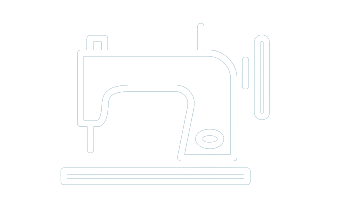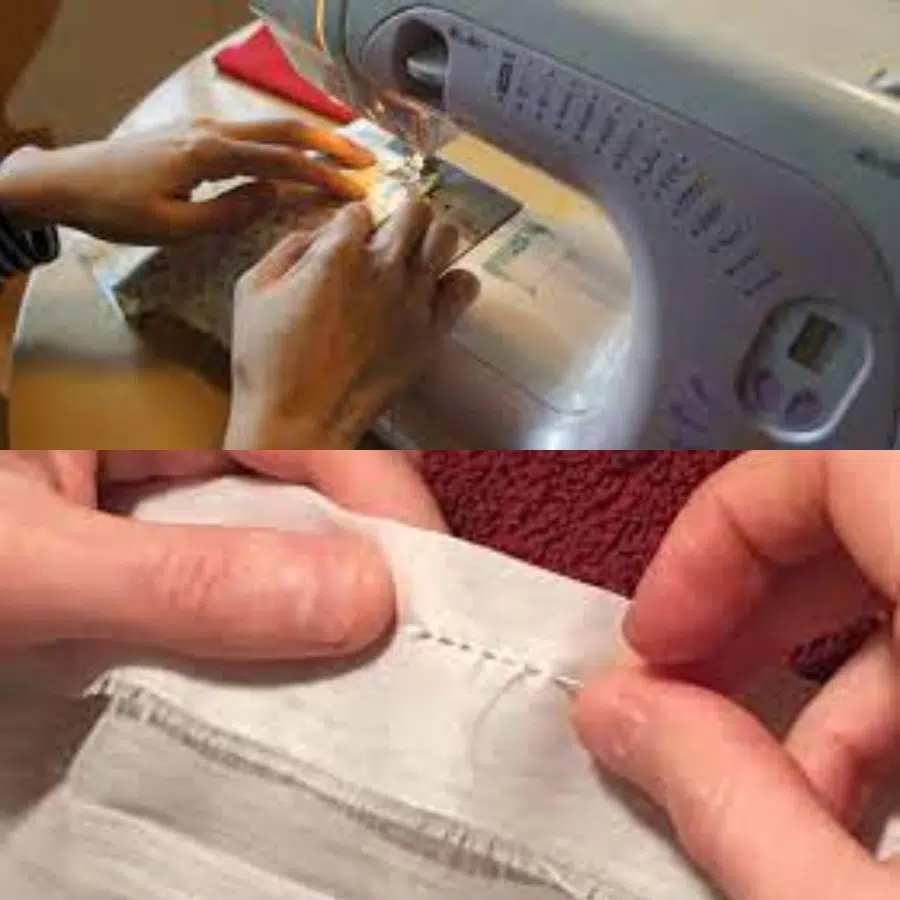What Is Difference Between Sewing Machine And Hand Sewing
Sewing is a great way to express your creativity and make something unique. But when it comes to hand sewing vs using a sewing machine, which one should you choose? In this article, we’ll explore the differences between these two methods of stitching so that you can decide which one works best for you!
Hand Sewing
Hand sewing is a great way to create and repair fabric with your own two hands. The biggest advantage of hand sewing is that it is portable and comes in handy when needed. You can start sewing by hand wherever and whenever you want. It requires basic tools like:
- Needles
- Thread
- A piece of fabric or material that you want to sew together.
Hand stitching also involves some skill and technique – knowing how to start, end, and hold the seam while creating small even stitches. You may also need other materials such as pins to secure the pieces in place.
This type of handwork requires skill and patience, but it can be an extremely satisfying process to create garments and other items from scratch. Hand sewing is a great way to bring your creative vision to life!
Types Of Hand Sewing
There are many different types of hand-sewing techniques used in garment making as well as quilting, embroidery, and other handcraft projects. Some hand-sewing techniques include
- Hand stitching
- Backstitching
- Running stitch
- Slip stitch
- Hemming
- Embroidery
Hand stitching
It is the most basic hand-sewing technique used to invisibly join fabric pieces together in a neat line of stitches along the edge of two fabrics.
Backstitching
This stitch allows for a more secure and permanent joint between two fabrics and is often used to start hand-stitching projects.
Running stitch
This type of stitch is a hand-sewing technique that creates a decorative row of small, even stitches on the surface of the fabric.
Slip stitch
This is an invisible hand stitch used to securely finish seams and hems.
Hemming
Hemming is the hand sewing process used to neatly finish off the raw edges of the fabric with double-folded fabric and hand stitches.
No matter what hand-sewing technique you use, hand-sewing is a great way to add a personal touch to your projects. With patience and practice, hand sewing can become an art form that will last for generations.
Embroidery
Embroidery by hand is an inexpensive, yet impactful way to bring new life to any outfit. With just a few basic steps, you can create detailed designs that will double or even triple the effect of your look!
Sewing Machine
A sewing machine is a tool used to sew clothes. Using a sewing machine has many advantages over hand sewing. Sewing machines come in various types, from basic mechanical models to advanced computerized sewing machines that are controlled via a touchscreen interface or even through smartphone apps. They can be used for a wide range of sewing tasks, from mending clothes and embroidery to stitching intricate patterns on fabric.
Advantage Of Sewing Machine
One of the main advantages of sewing machines is speed. A sewing machine can sew at many times the speed that a person can manually sew, allowing you to finish projects much more quickly. They also tend to be a lot more accurate than sewing by hand, producing consistent and even stitches. Sewing machines also have many built-in features such as adjustable tension settings, automatic thread cutters, and the ability to sew multiple layers of fabric at once.
Basic sewing machines usually feature more accuracy than hand sewing, sewing machines are perfect for sewing everything from lightweight silk and chiffon to heavy upholstery fabrics. Advanced sewing machines can even be used on specialty fabrics like leather, vinyl, and suede.
Types Of Sewing Machines
There are three main types of sewing machines: manual, semi-automatic, and automatic. Each has its own advantages, so it’s important to understand what you need before making a purchase.
Manual Sewing Machines
These are the oldest type of machines and require you to sew with your hands. They’re great for simple tasks, such as hemming and attaching buttons, but they’re not always the best option for more complicated tasks.
Semi Automatic Sewing Machines
These machines sew with a motor and shuttle, so you don’t have to move your hands as much. They’re great for sewing fabrics together, making seams, and doing other tasks that require accuracy and speed.
Automatic Sewing Machines
These machines sew with a computer, so you don’t have to worry about any of the details. They’re great for sewing fabrics together, making seams, and doing other tasks that require accuracy and speed.
Conclusion
There are some key differences between hand sewing and sewing machines. For starters, hand sewing is much slower than sewing machines. In addition, with hand sewing, you are limited to smaller and less complex projects but you can add the details you want. As far as machine sewing is considered it is faster in process and can help you in the mass production of clothes.

